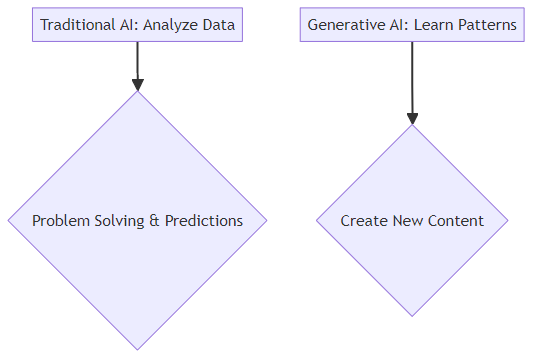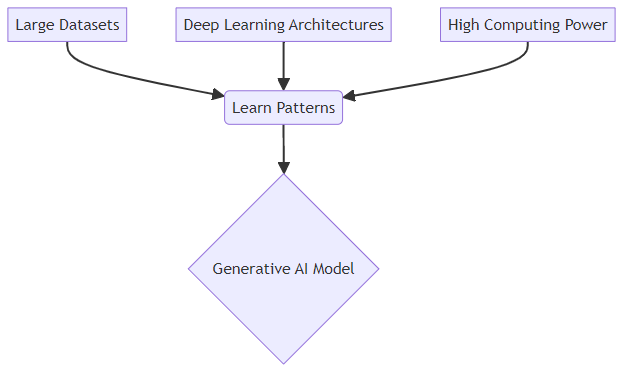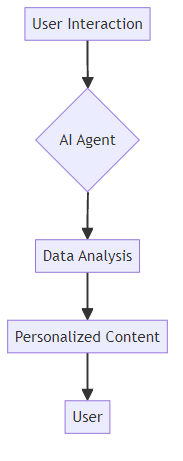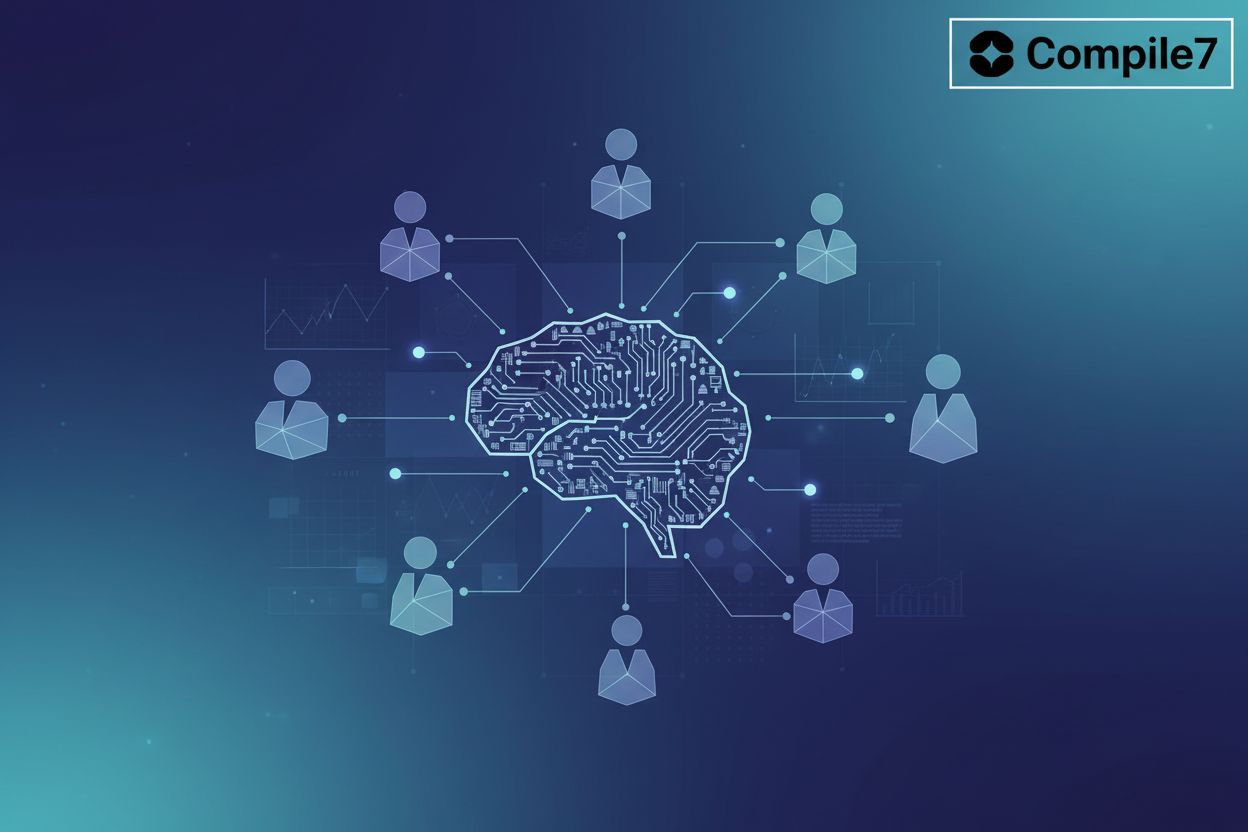Revolutionizing Content Personalization: How Generative AI and AI Agents are Transforming Business
The Rise of Personalized Content and the Generative AI Revolution
Did you know that 71% of consumers feel frustrated when an experience is not personalized (Unlocking the next frontier of personalized marketing - McKinsey)? This really shows how important tailored content is these days. This section talks about why everyone wants personalized stuff and how generative ai is changing the game for making it.
People now expect stuff that's just for them, you know? They want things that feel right and get where they're coming from.
- Tailored Content: Customers want brands to know what they like and give them content that hits home. Like, a doctor's office could use ai to make custom wellness plans.
- Engagement and Loyalty: When things are personalized, people pay more attention, buy more, and stick around longer. A store, for example, could suggest stuff just for you.
- Limitations of Traditional Methods: The old ways of personalizing stuff often can't keep up or don't really get the data. Generative ai fixes this by letting you personalize everything, for everyone.
Generative ai can actually make new stuff, not just analyze it. This is a big deal for how businesses do personalization.
- Content Creation: Generative ai can make new content from words, pictures, sounds, and videos. This means you can make all sorts of cool personalized experiences.
- Novel Outputs: Unlike older ai, generative ai makes totally new things based on what it learned. It's not just guessing, it's actually creating.
- Hyper-Personalization at Scale: Being able to make unique content means you can personalize like crazy, for tons of people. Like, a bank could use ai to make personalized investment advice.
The difference between generative ai and regular ai is how they use data and make stuff. Generative ai is like an open book, always making new things.
- Traditional AI: Regular ai looks at existing data to solve problems or predict stuff, like a closed system. It's for things like catching spam emails.
- Generative AI: Generative ai learns from data patterns to make new content, in an open way. This includes making pictures from just a text description.
- Democratization of Content Creation: Generative ai makes it easier for anyone to create stuff. More people can use ai for all sorts of things now.

As we go on, it's important to get how ai agents use generative ai to make business stuff easier. The next part will get into that.
Unlocking the Power of Generative AI for Content Personalization
Did you know that generative ai models need a ton of data to learn and make good content? These models are really changing how we personalize things, but you gotta know what makes them tick. Let's look at the main parts that make this tech work.
Big datasets are the bedrock of generative ai. Without lots of data, these models can't learn the complex patterns to make good content. The Rise of Generative AI points out that these models need tons of data to learn patterns and make new content effectively.
Deep learning structures are also key. Things like Generative Adversarial Networks (GANs) and Transformers are often used to train these models. These structures help the ai understand and copy complex data.
Generative models require vast amounts of data to learn patterns and create new content effectively.
Training generative models needs a lot of computer power. Strong hardware, like Graphics Processing Units (GPUs), is needed for all the heavy computing. Good training means the models learn fast and right.

Generative ai isn't just for one type of data anymore. It's getting better at handling all sorts of inputs and outputs, making it useful for more things. This makes ai assistants able to do more, making things better for users everywhere.
Big steps in Natural Language Processing (NLP) are helping generative ai make really good text content. These advances let ai write in different styles, translate languages well, and write creative text. The Rise of Generative AI.
Diffusion models are leading the way in making super realistic images and videos. Models like Google’s Lumiere can make videos from text, change existing pictures based on what you want, and make totally new pictures with amazing detail. This is huge for making media, entertainment, and designing products.
As this tech gets better, it's super important to think about the ethical stuff, like privacy and bias. Balancing new ideas with doing things right will make sure generative ai helps everyone.
Now that we've looked at what makes generative ai work and how it's growing, the next part will talk about how ai agents are using this to change business.
Real-World Applications: Generative AI in Action
Did you know generative ai is already changing industries from healthcare to stores? Let's see how businesses are using this tech to make personalized stuff and run smoother.
Generative ai is changing marketing by letting companies make super targeted content that connects with specific people. This means marketing messages are not only more relevant but also work best on different platforms. Companies now use generative ai tools to write product descriptions, social media posts, and personalized marketing words, making customers more engaged and buying more. The Rise of Generative AI.
Personalized prompts let you make cool emails just for what a customer likes, so they open and click more. For example, someone who bought running shoes might get an email about new workout clothes or related fitness stuff. Being able to personalize content for everyone is a game-changer for marketers, letting them give experiences that feel personal and right.
Generative AI is not just a technological advancement but a transformative force that is reshaping business practices and opening up new possibilities across industries.
Generative ai can make human-like answers for customer service chatbots, making customers happier. These chatbots give personalized suggestions and answers based on what the customer has bought. For instance, a chatbot can look at what a customer bought before and give them custom advice or help fix problems.
Ai also figures out how customers feel and changes its answers, making it more caring and effective. If a customer sounds upset, the chatbot can say sorry and get a human involved if needed. These ai chatbots are changing customer service by giving instant, personalized help.
Generative ai looks at how customers act and what they like to suggest products just for them, making shopping better. Ai-powered virtual try-ons and personalized shopping experiences get customers even more involved. For example, someone looking at furniture online can use a virtual tool to see how a couch would look in their room, making them feel more sure about buying it.
Plus, generative ai can design unique clothes that fit what a customer wants. A customer can give their size and style ideas, and the ai will make custom clothing designs that fit them perfectly. This kind of personalization is changing online shopping and making customers happier.
These real examples show how much generative ai can change things. As we move forward, it's gonna be important to think about the ethics and how to use this tech responsibly.
Next, we'll look at how ai agents are using these advances to change business.
The Role of AI Agents in Content Personalization
ai agents are changing how businesses personalize content, but what are they exactly and how do they help? Think of them as special digital helpers, programmed to get and give people what they want.
- ai agents are proactive, independent ai programs that give special help to workers or customers. Instead of just waiting for orders, they actively look for ways to help users.
- They can have business knowledge to do tasks based on specific jobs. For example, an ai agent acting as a customer service person can look up a customer's past purchases and offer custom solutions.
- ai agents make things more productive by doing repetitive tasks automatically and giving personalized help. By handling simple questions and tasks, they free up people to do more important and strategic work.

- ai agents can look at user info and what they like to give tailored content on different platforms. For instance, an ai agent can change how a website looks based on what a user looked at before.
- They can change content styles and formats to match each user. This includes changing font sizes, colors, and how complicated the words are to make sure everyone can read and enjoy it.
- ai agents make sure messages are always the same and relevant, making the whole customer experience better. By keeping a consistent voice, they build trust and make customer relationships stronger.
As ai agents keep getting better, businesses will find new ways to use them for personalization. Next, we'll see how these agents are changing business.
Overcoming the Challenges: Ethical Considerations and Limitations
Generative ai and ai agents are powerful, but they come with responsibilities. How can businesses make sure these technologies are used fairly and right?
A big problem is bias in ai models. Generative ai models learn from data, so if the data is biased, the results will be too. It's super important to use different kinds of data and check for fairness all through the making process.
Ensuring algorithms and systems are designed in an equitable way and free of discrimination is essential.
Stopping algorithmic discrimination means careful planning and quick action to fix unfair tools. This includes checking ai systems for bias often and fixing any problems.
Another issue is that it's hard to know how generative ai models actually work. These models can be like black boxes, making it tough to see how they get their answers. This lack of clear explanation can make people not trust it and make it hard to find and fix mistakes.
Explainable AI (XAI) is coming out to help with this and make generative ai models more clear and trustworthy. XAI tries to show how ai models make their decisions.
Being clear is important for checking if things are reliable and finding mistakes. By knowing how ai models make content, businesses can better make sure their results are good and correct.
Generative ai models are great at mixing old ideas, but they might not be good at truly new thinking. Models often have trouble understanding the deeper meaning in words, the feelings in conversations, or the cultural background of a picture. This can lead to stuff that's technically okay but doesn't fit the situation.
Data dependence means you need a lot of resources to make and manage huge datasets. Making sure the data is good and varied is important, but it can also be expensive and take a long time.
As we keep using these technologies, understanding their limits and ethical stuff will be key. Next, we'll look at how businesses can successfully put ai agents into their current ways of working.
The Future of Content Personalization with Generative AI
The future of personalization is changing fast, thanks to generative ai's ability to make unique and custom experiences. But what new trends and advances can we expect in the coming years?
Future advances will mean models can handle complex data types easily. This means ai will get even better at understanding and making content across words, sounds, and videos. The Rise of Generative AI. Imagine ai assistants that can make personalized video summaries of news articles or create custom music playlists based on how you feel.
- ai will make content that fits how each person learns in school. For example, ai could change how hard or easy a lesson is based on how well a student is understanding it right then.
- In healthcare, ai can make personalized wellness plans with words, sounds, and videos. This could include custom exercise plans and food suggestions.
- For marketing, ai can make really interesting ad campaigns that change as people interact with them. This makes sure ads are not only relevant but also work best on different platforms.
Explainable AI (XAI) will make people trust it more because it's clear. XAI tries to show how ai models make their decisions, making them easier to understand and trust.
- Being clear is important for checking if things are reliable and finding mistakes. By knowing how ai models make content, businesses can better make sure their results are good and correct.
- XAI could help find and fix biases in ai-made content, making sure it's fair and equal. This is really important for things like hiring and getting loans.
- With XAI, users get a better idea of why ai suggests certain content or products. This makes users trust it more and be happier.
Easy-to-use tools will make generative ai available to more people, helping creators and developers. Like we said before, advances are making generative ai easier for developers and creators to use.
- More accessible tools will let small businesses use ai for making content without needing special skills. This makes it a fair playing field, letting them compete with bigger companies.
- Making it available to more people helps new ideas grow by letting more users try out ai for different things. This leads to new and creative uses of the tech.
- Easy-to-use tools will let people make personalized content for themselves and their communities. This helps people express themselves and be creative.
People and ai will work together, with ai helping with ideas, making content, and trying out designs.
- ai can be like a creative partner. It can help make first drafts, look at different design options, and give feedback on how good the content is.
- In making products, ai can help designers improve prototypes by making different versions based on what users say. This speeds up the design process and makes the final product better.
- For marketing, ai can help come up with new campaign ideas and write first drafts for ads. This lets human marketers focus on strategy and looking at data.
Ethical stuff is still super important, with researchers using different data and checking for fairness to reduce bias. Making sure algorithms and systems are designed fairly and without discrimination is key.
- Researchers are creating ways to find and fix biases in the data ai learns from. This makes sure ai models make fair and unbiased content.
- Ethical rules are being made to guide how ai is used for personalization. These rules cover things like data privacy, being clear, and who's responsible.
- Companies are putting fairness checks in place all through the ai development process. This helps stop unfair algorithms and makes sure things are equal.
Reskilling programs will get the workforce ready for this future of working with ai.
- Training programs will give workers the skills they need to work well with ai. This includes knowing how to use ai tools, understand what ai says, and give feedback to make ai models better.
- Reskilling programs will focus on skills that are uniquely human, like thinking critically, being creative, and understanding emotions. These skills are important for success when ai handles many routine tasks.
- Schools are changing their classes to get students ready for the future of work. This includes adding ai to courses and giving students chances to work on ai projects.
As we look ahead, the teamwork between people and ai will keep changing how we do personalization. Next, we'll look at how businesses can successfully put ai agents into their current ways of working.
Getting Started: Implementing Generative AI for Your Business
Putting generative ai into practice can seem hard, but breaking it down into steps makes it doable for any business. By figuring out what you need, picking the right tools, and making a responsible plan, you can use ai for personalization. Let's see how to start.
First, find specific places where generative ai can make your content personalization better. For example, could ai help make email campaigns more interesting, suggest products better, or improve customer service chats?
Next, set clear goals for using ai. What exactly do you want to achieve, like more clicks, more sales, or happier customers?
Finally, check your current data setup and see what's missing. Do you have enough data to train ai models well, and is your data organized and easy to get to?
Look into and compare different generative ai tools and platforms based on what you need. Think about how easy they are to use, if they can grow with you, and how they connect with other systems.
Check out platforms like Amazon Personalize, ChatGPT, and DALL-E 3 to find the best fit for your business. Each platform has its own strengths, so see which one matches your goals.
For example, Amazon Personalize can add descriptive themes to batch recommendations, making users more interested Amazon Personalize. ChatGPT is great for making human-like text for chatbots and personalized customer chats. DALL-E 3 is awesome at making unique pictures from text, perfect for marketing and creative stuff.
Make rules and safety measures to stop misuse and make sure things are done responsibly. Like the California Community Colleges say, a HUMANS-centered approach is key, focusing on people being involved, everyone getting support, and privacy being managed well. Generative AI and the Future of Learning.
Make data privacy and security a priority to protect user info. Make sure you follow all the rules and have strong security to stop data leaks.
Keep checking and evaluating to deal with bias and make things work better. Regularly check your ai systems for fairness and accuracy, and make changes to get the best results.
By doing these things, you can successfully use generative ai for your business. The next part will look at how businesses can successfully put ai agents into their current ways of working.





